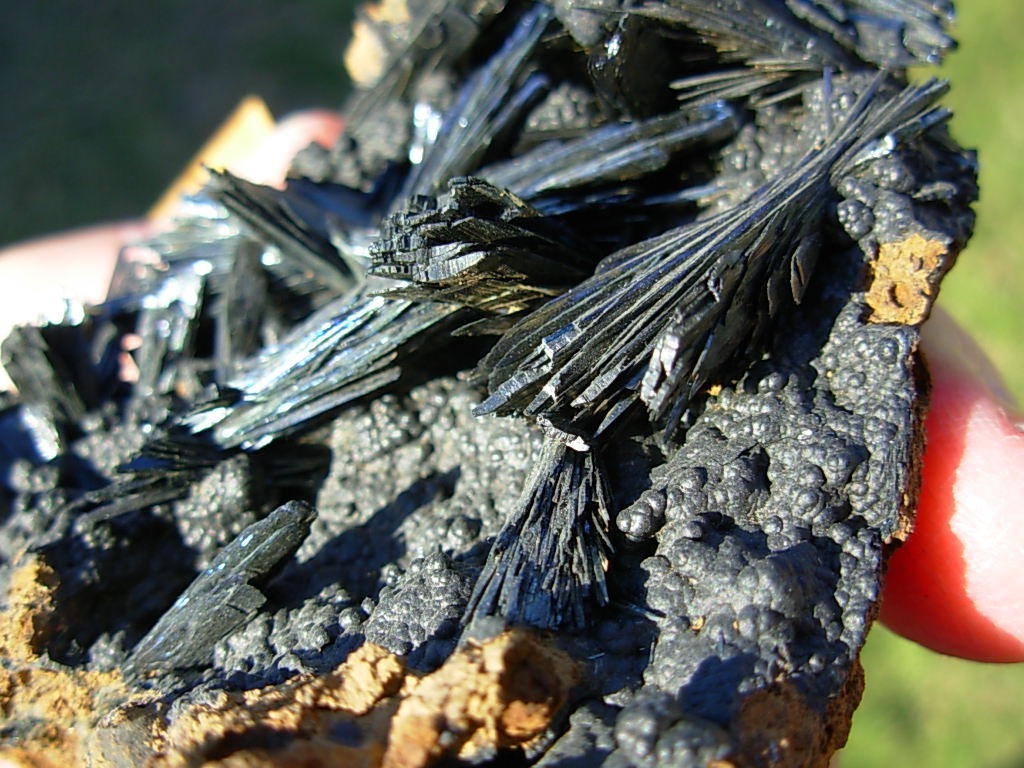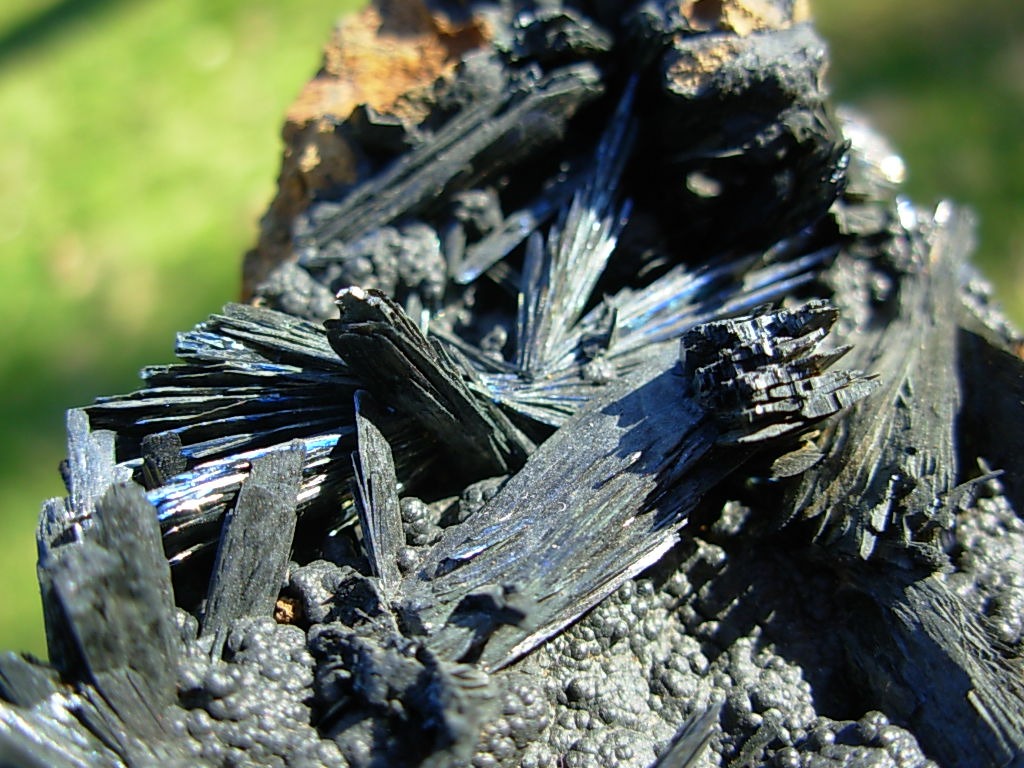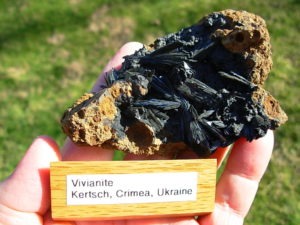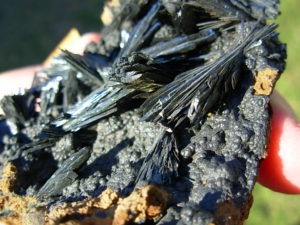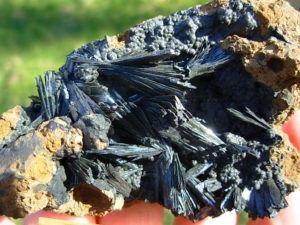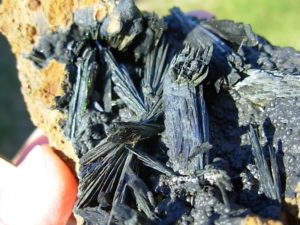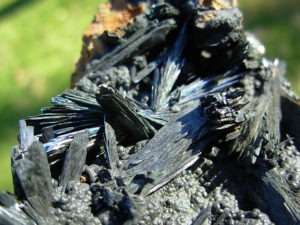Vivianite
Vivianite is an iron phosphate mineral. It occurs as a secondary mineral found in a number of geological environments. It is usually found as deep blue to deep bluish green prismatic to flattened crystals.
It is formed by the alteration of ore deposits near the surface, or of primary phosphates in pegmatites. Vivianite crystals are often found inside fossil shells, such as those of bivalves and gastropods, or attached to fossil bone. Vivianite darkens upon exposure to oxygen.
Notable localities are Russia, Ukraine, Namibia, England, and Maryland, Colorado in the United States, and the town of Iwama, Japan.
It was first described in 1817 and named after John Henry Vivian, who first discovered crystals of the mineral in Cornwall, England. The type locality is Wheal Kind, in St Agnes, Cornwall.
From Wikipedia, the free encyclopedia https://en.wikipedia.org/wiki/Vivianite
tem # VIV02137772
Excellent Vivianite from Ukraine

Vivianite This is an excellent old stock Vivianite specimen from an area near the Black Sea known as Kerch, Crimea Peninsula, Ukraine. This display piece is from our personal collection. This unique display has multiple clusters of very deep indigo blue to black acicular blades of Vivianite to 1.2" (3.2 cm) long in radiating formations on a plate of botryoidal goethite coated matrix. All photos taken dry, in natural sunlight with a Nikon CoolPix L1 camera.
This specimen weighs 3.76 oz or 0.23 lbs (107g)
and measures 3.7 x 2.2 x 1.2 inches (9.4 x 5.7 x 3.2cm)

